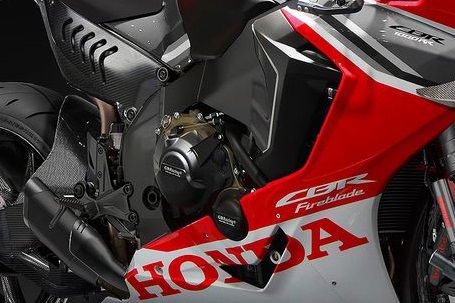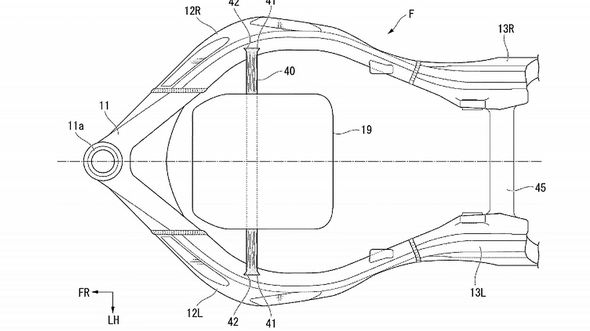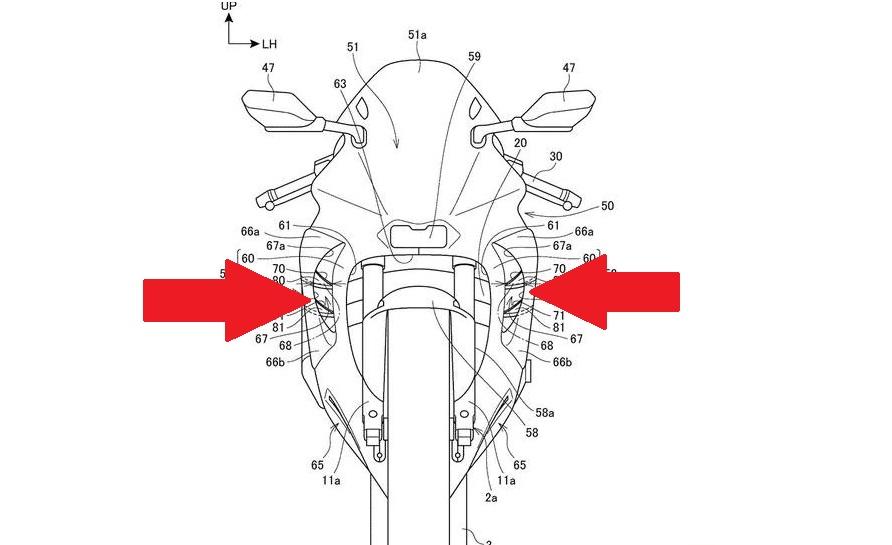What could the next-gen Honda Fireblade look like?
With patent drawings and rumours swirling the internet regarding a potential new Fireblade for 2020, Visordown ponders what the new machine could look like

THE internet is awash with Honda Fireblade rumours and patent drawings right now - and some clever renderings like the one above from Young Machine in Japan. Some have elements of truth to them; many are just hearsay. Here’s a rundown of what the new machine could include and how it’ll shape up against the current crop of 200bhp superbikes.
To start with, let’s address the big talking point; BHP. Honda has never been the company to get involved in the outright power struggle that some manufacturers strive to win. They’ve always preferred to go their own way, opting for more control, better rider feedback and overall, a more balanced riding experience.
That looks set to change in 2020, as the new Honda is rumoured – by those close to the factory – to be pushing out over 200bhp. Some sources claim 220bhp, some 212bhp. Whatever the final number, a road-going Fireblade with near BSB levels of power is an extremely exciting proposition indeed.

How could the new Fireblade make 200+bhp and conform to Euro5?
We’ve already seen the patent filings for Honda’s own variable valve timing (VVT) system so it only seems natural that this will be one of the ways Honda help extract the BHP from the 1000cc unit. The bike the patent drawing shows in the filing is also a sports bike, looking eerily like a Fireblade in its silhouette.
The new VVT system (seen above) boasts two cam profiles per valve, on both the intake and outlet sides of the head. One lobe is more conservatively profiled for low-speed, low emissions, the other more aggressive for more top-end power with an increased lift and opening time.

Will the new Honda Fireblade be a V4 layout?
If one thing is for sure, the new ‘Blade won’t be a V4. Sadly, that goes against all the rules that underpin the Fireblade philosophy. The inline four-cylinder layout is part of the Fireblade story and is too much of a part of the bikes history to change it now. If a V4 powered superbike is in the offing from the Japanese giant, it’ll likely come in the form a re-boot of one of Honda’s previous V4 machines.

Will the new Fireblade have a carbon frame?
Full carbon – probably not. It’s use in road bikes has forever been the dream for a motorcycle designer. In practice though, the application can make for an unforgiving and difficult to ride bike. The problem stems from the lack of flex a full carbon frame has, its stiffness at full lean doesn’t allow as much of the lateral energy absorption that a convention aluminium frame does.
Carbon carries other costs too, literally. It’s more expensive to manufacture and could place the final product is out of its natural price point. Another issue with a carbon frame is its fragility in a crash. The rigidity of carbon fibre means the item is at risk of cracking and breaking up completely in a collision that would see a standard frame remain in one piece.
One thing Honda is considering, and which could make an appearance in the new machine, is a carbon stiffened aluminium frame (see above picture). We’ve seen a patent that looks to introduce the tech, with carbon fibre spars being used to strengthen the frame where needed. The technique allows Honda to use thinner walls to the frame, with the carbon sections bolstering the bike where needed. Think of it like an aluminium and carbon fibre hybrid frame. Honda could also adopt some of the tech learned from its years in MotoGP and adopt the use of carbon swingarm or even a hybrid designed item for the new machine.

Will the new Fireblade have active aero?
Probably. Again, the patent filings paint (above) an interesting picture in motorcycling’s latest battleground. We can confirm that Honda has developed a system that uses cables to operate small winglets that sit within the bike's fairing. Whether they are deployed under hard braking or when a specific riding mode is selected is anyone’s guess. What we can see is that they are not winglets as we have seen them on the likes of the Ducati V4R or the Aprilia RSV4 Factory. Instead, these winglets are flat plates that sit within the fairing, angled down at the floor. The general idea is that deploying them when needed – hard braking seems most obvious – the winglets help push the front end into the Tarmac, increasing the braking effect and improving front end feel in the process.

Will this be the bike Alvaro Bautista rides in WSBK next season?
While Honda has a broader picture in mind when it comes to developing a road bike before then honing it into racer – unlike Ducati and Aprilia which could afford to start with what makes a race bike quick before working backwards into a road bike – there is definitely a sense that the 2020 Honda Fireblade has a ‘win on Sunday, sell on Monday’ approach firmly in mind.
Honda may be keeping its lips tightly shut when it comes to even acknowledging this machine’s existence, the seriousness with which it is taking the latest generation Fireblade is demonstrated by the in-house HRC team – currently dominating MotoGP – entering to take over the WorldSBK project. Alvaro Bautista won’t have come cheap either…
Indeed, after the Ducati Panigale V4 R and the Kawasaki ZX-10RR, Honda knows the new Fireblade needs to be something a little more special to conquer the podium as well as the sales charts.

.png?width=1600)
